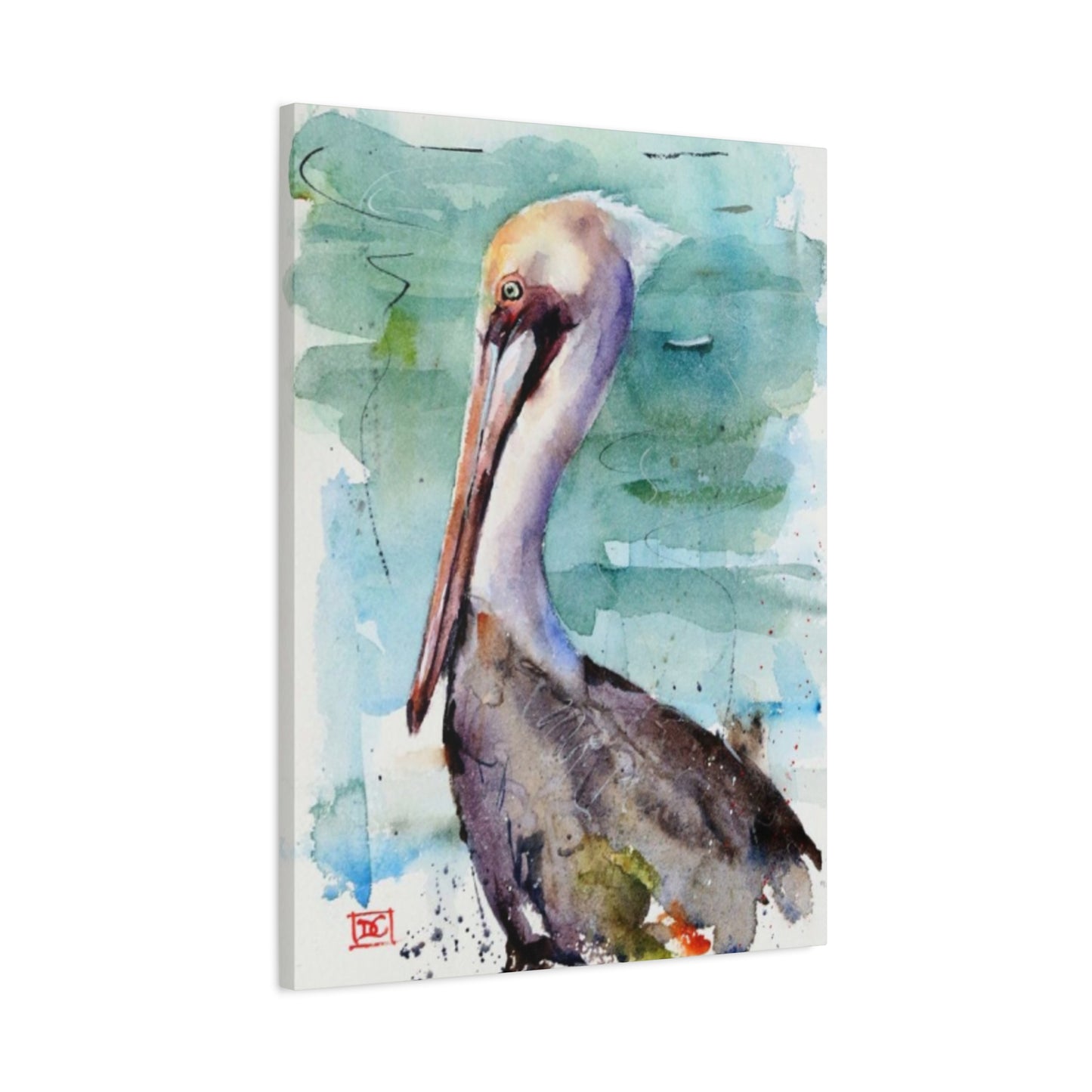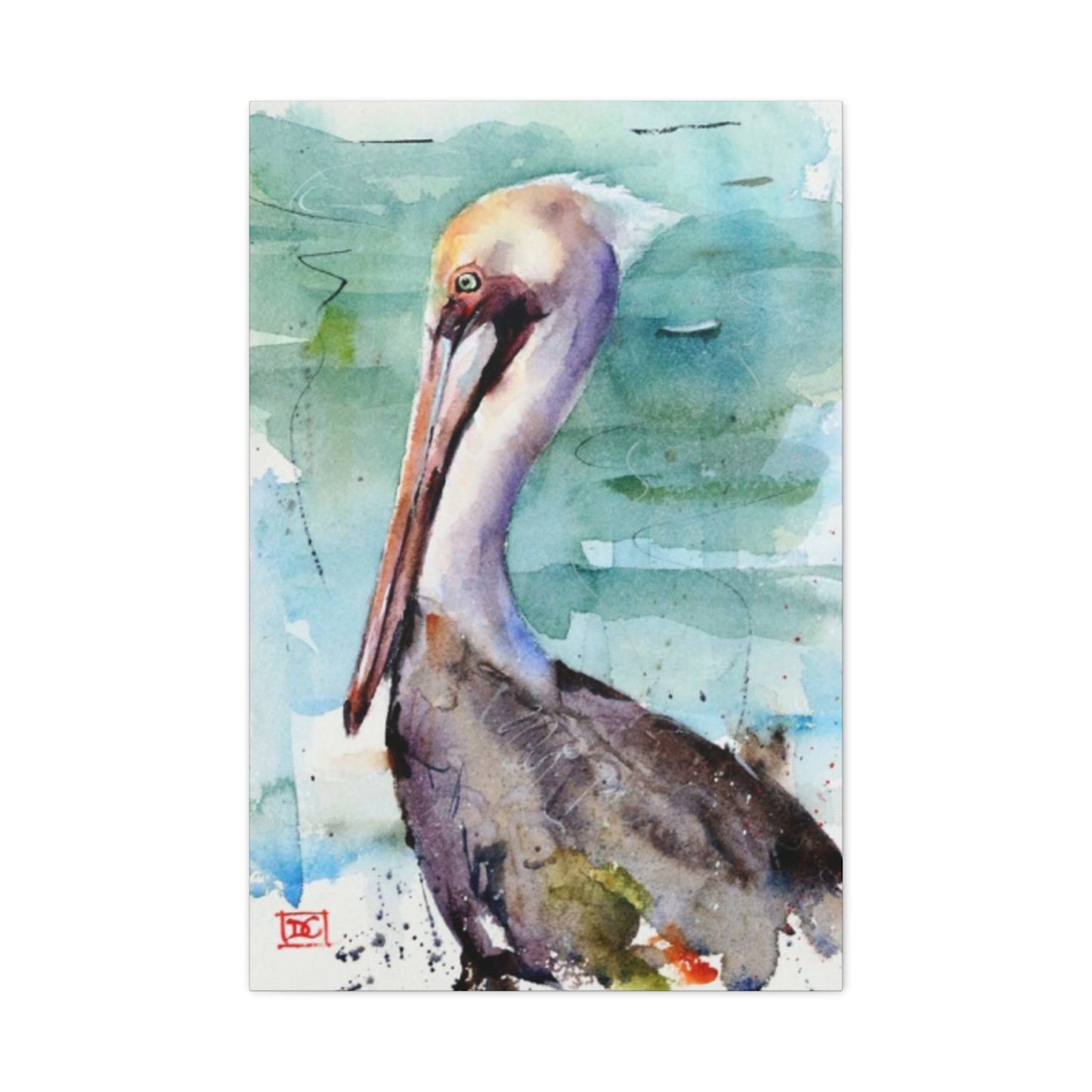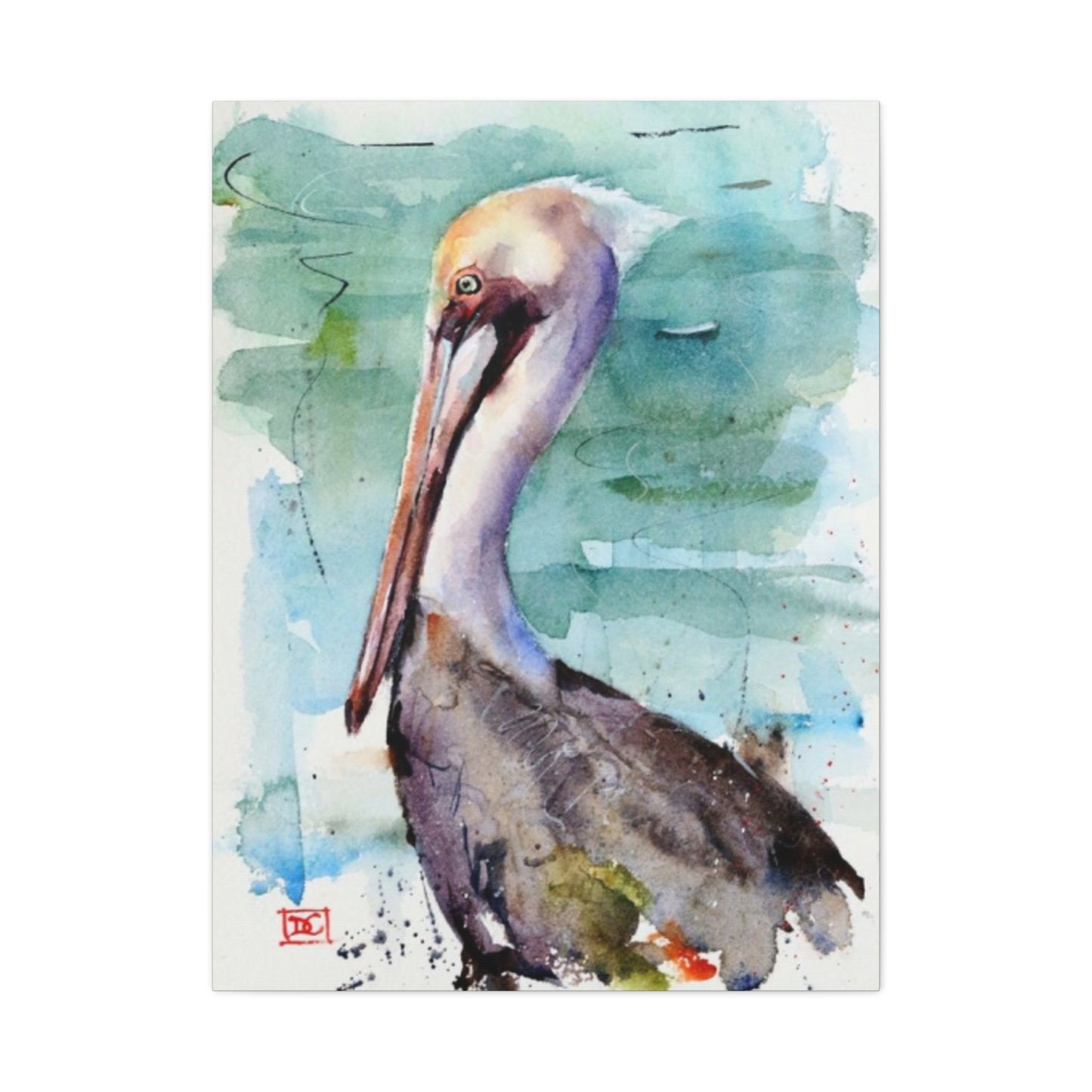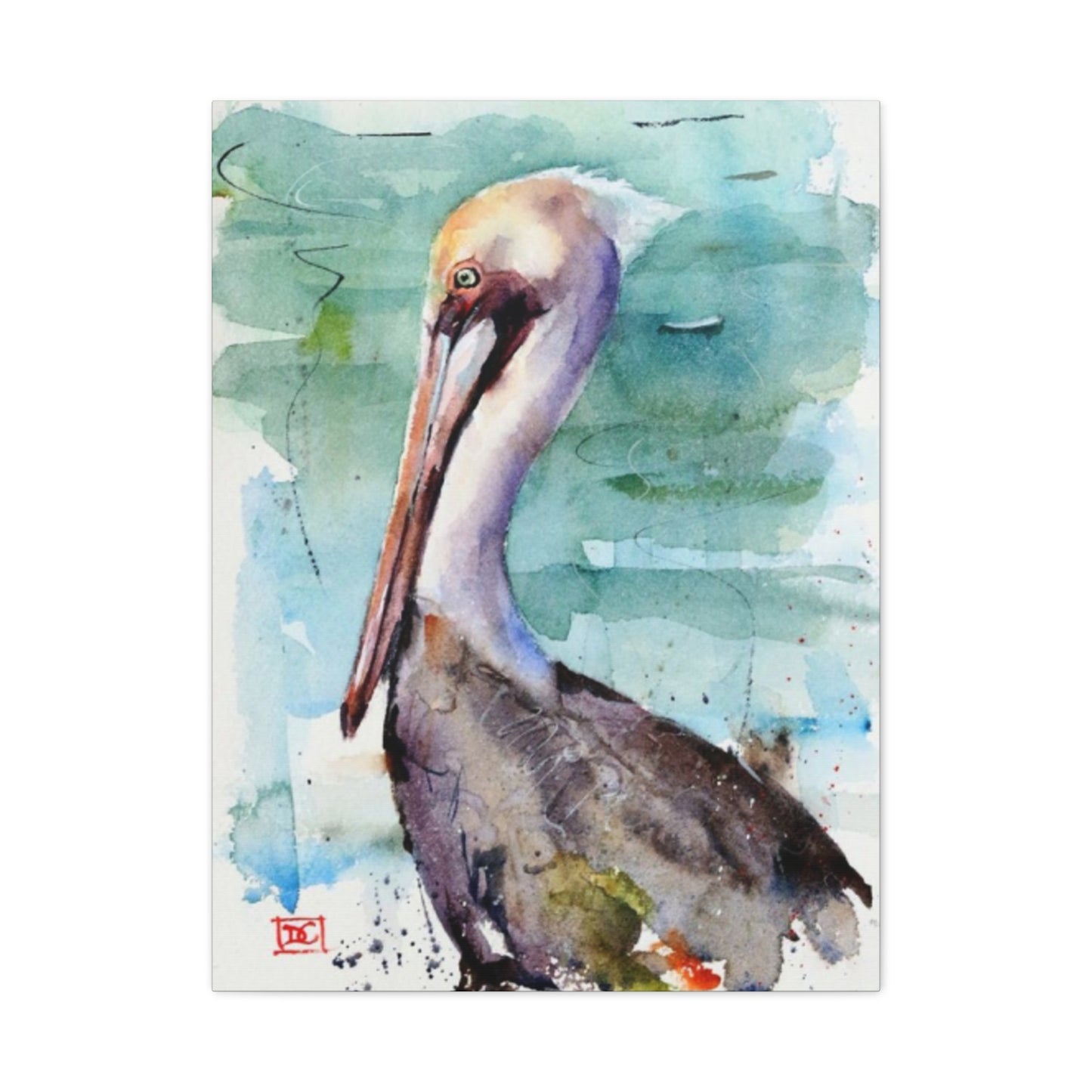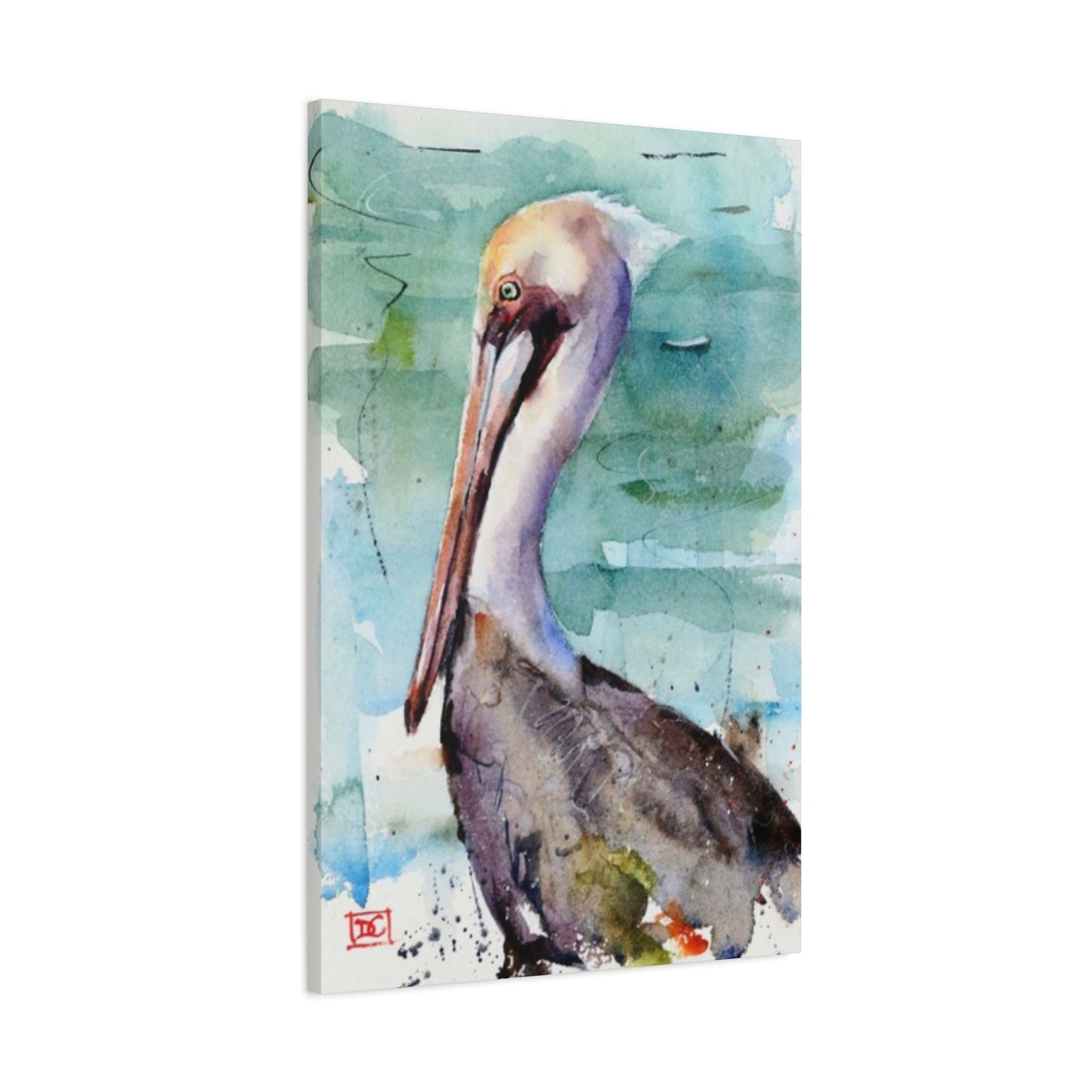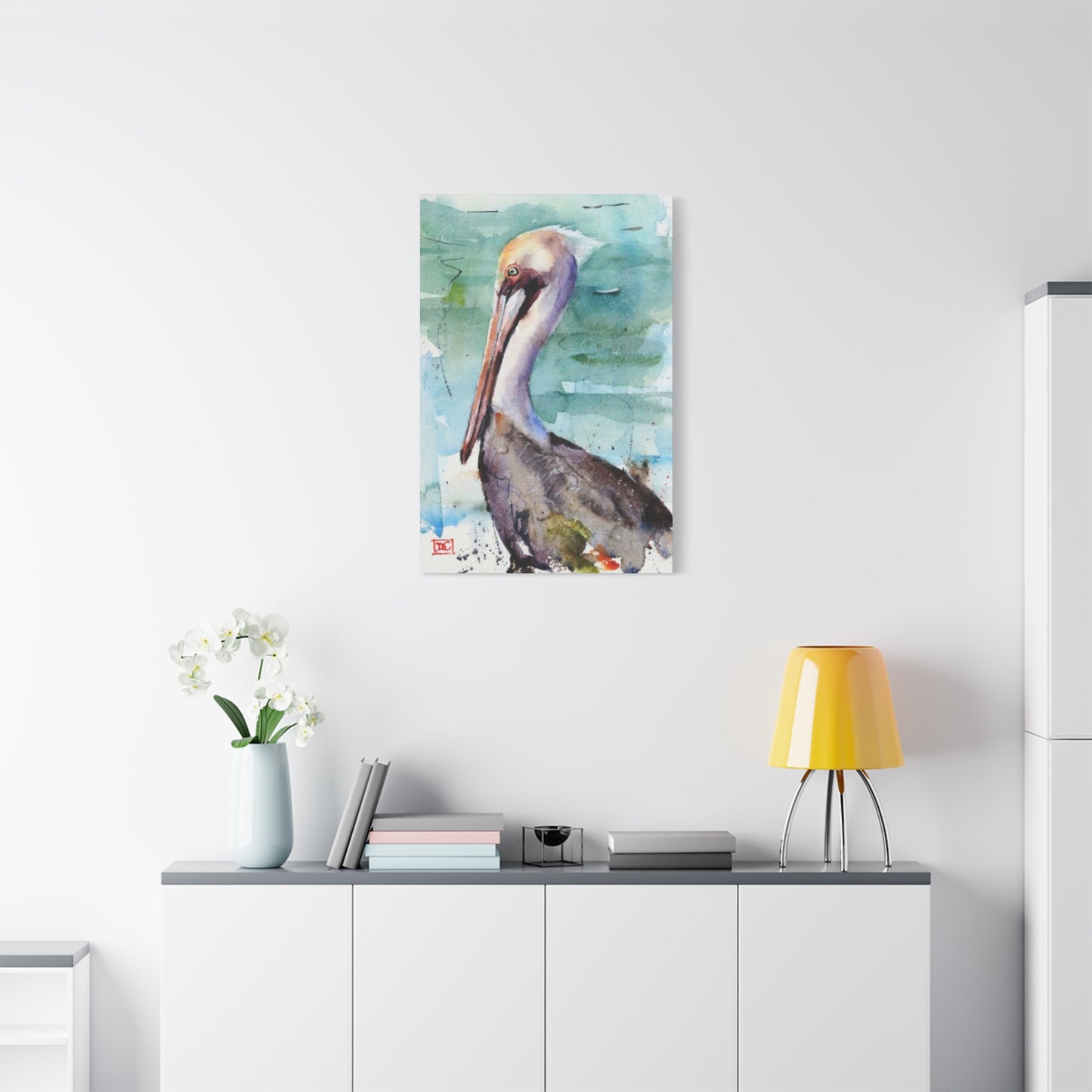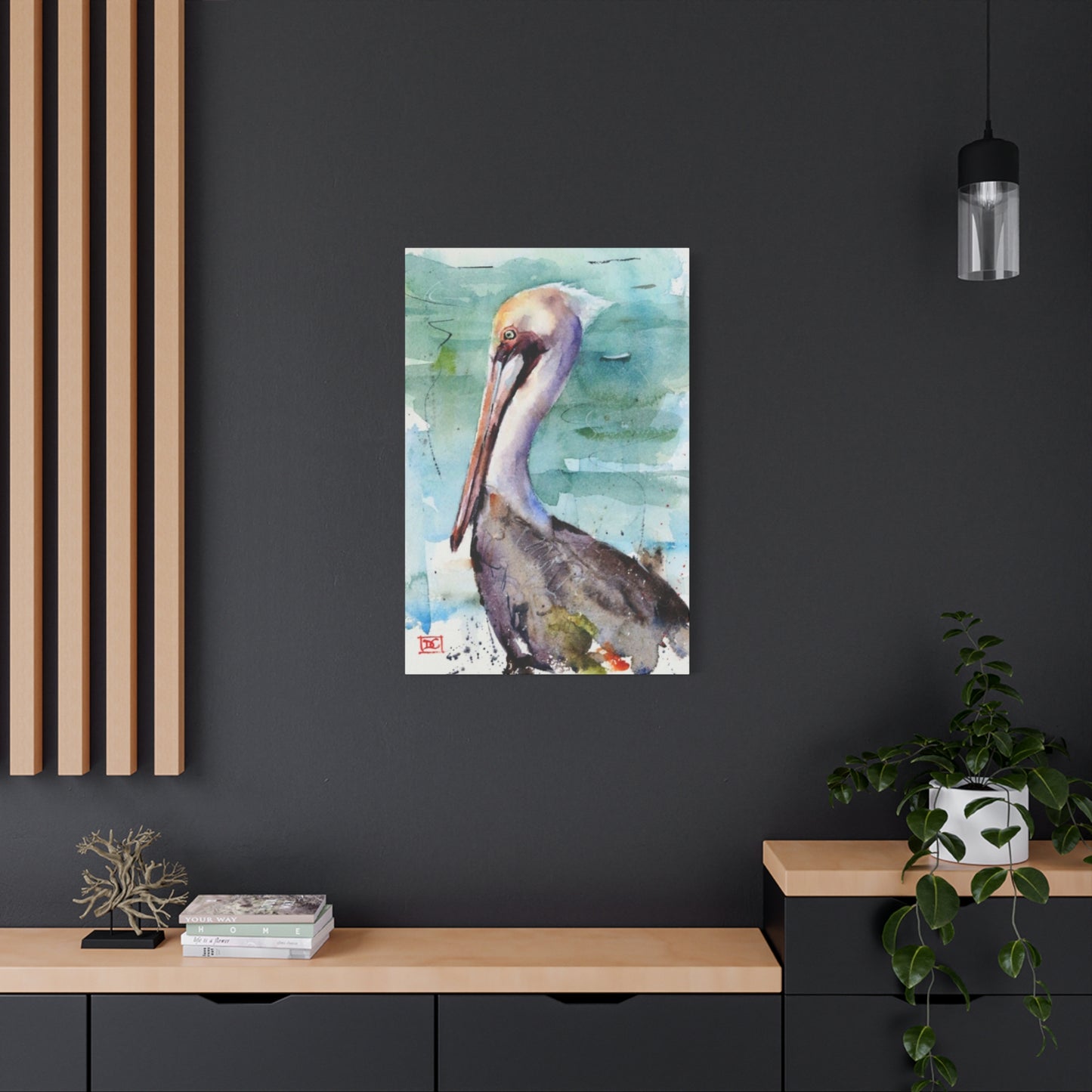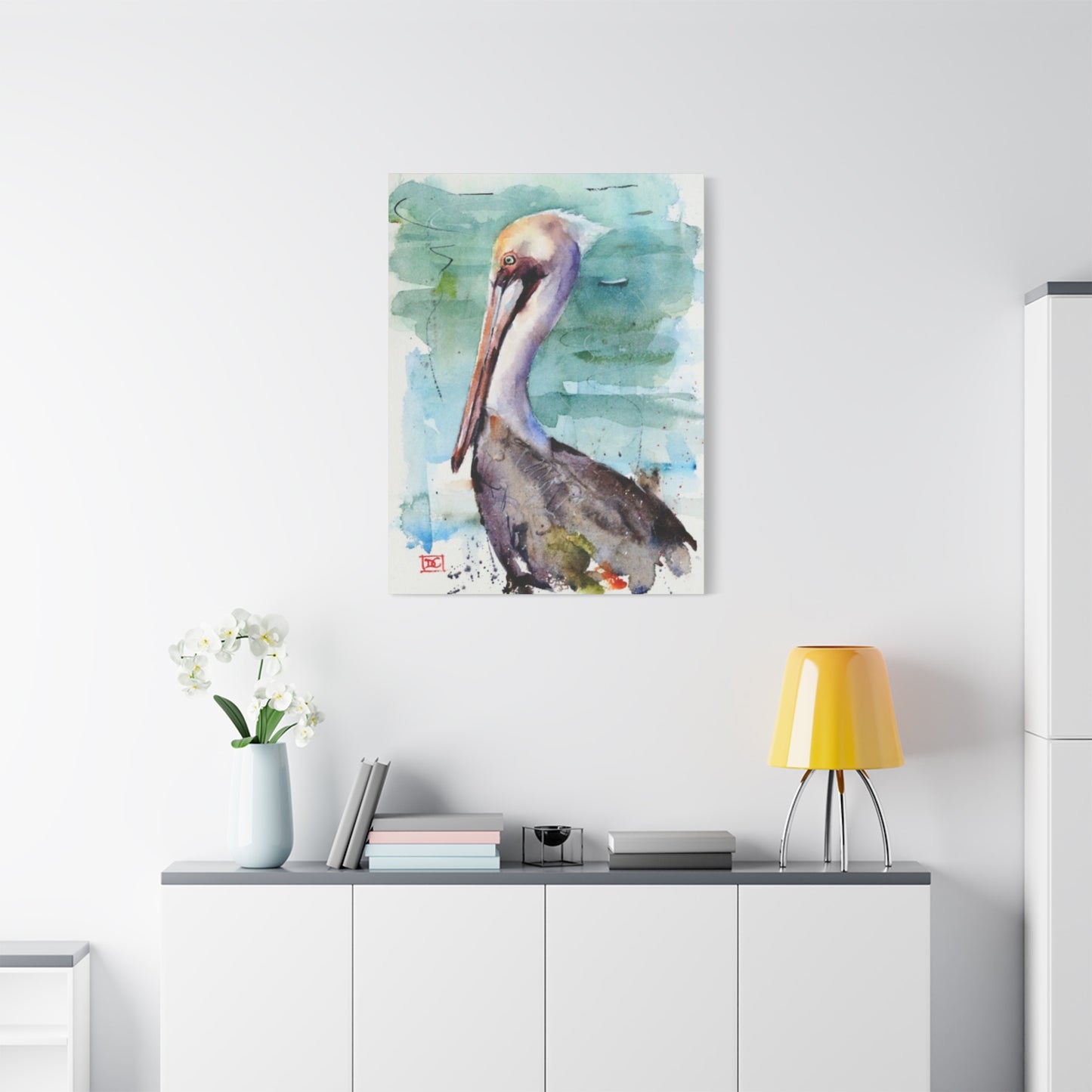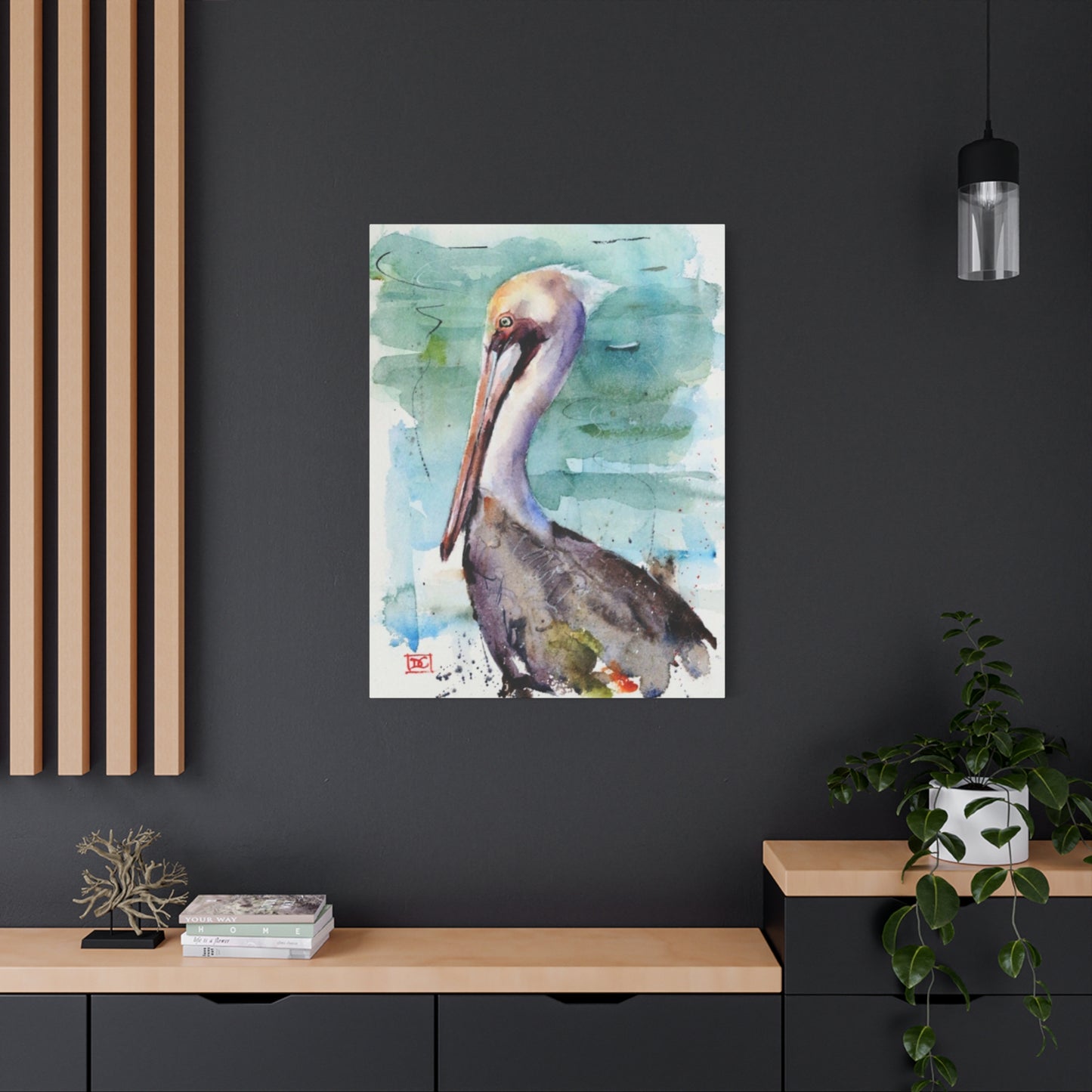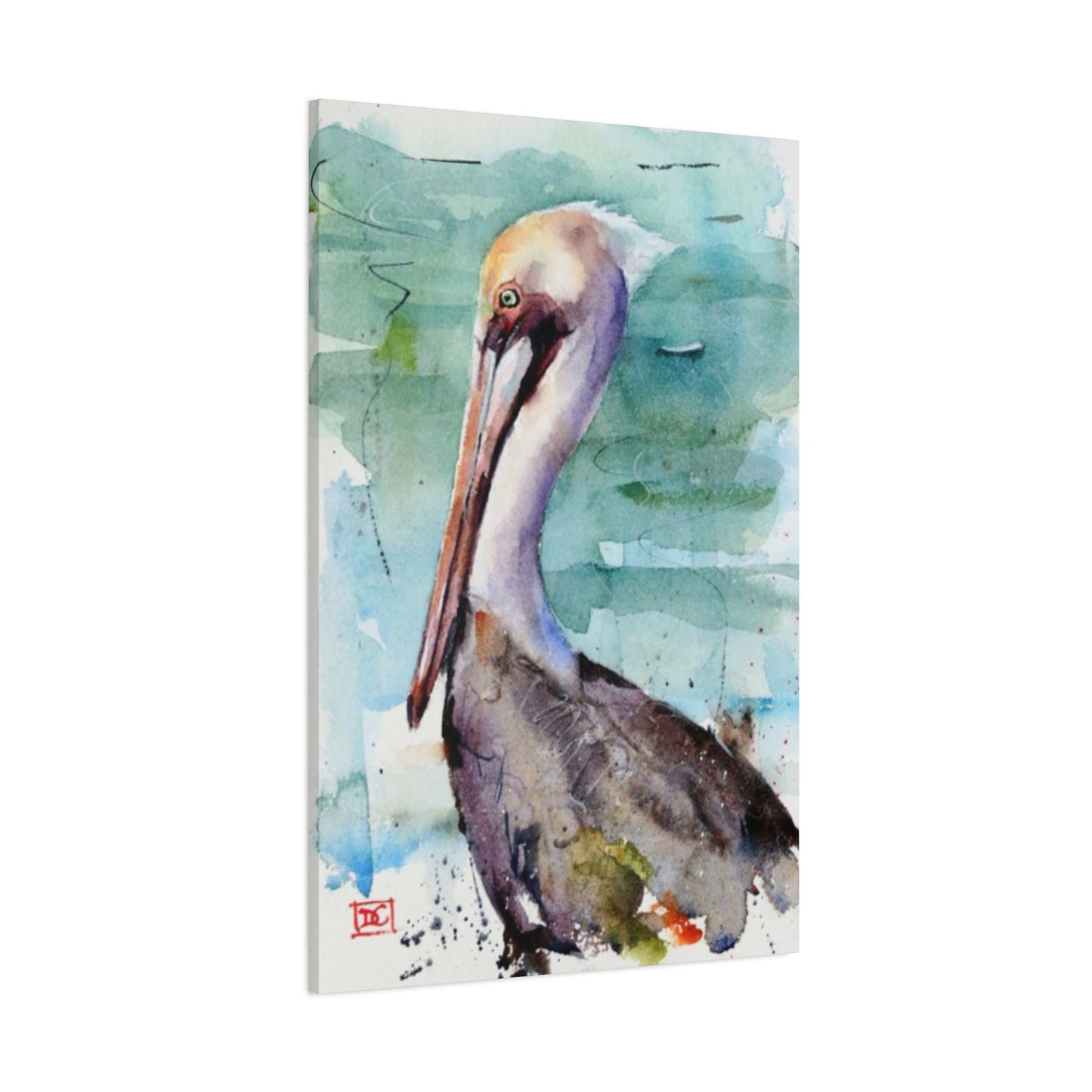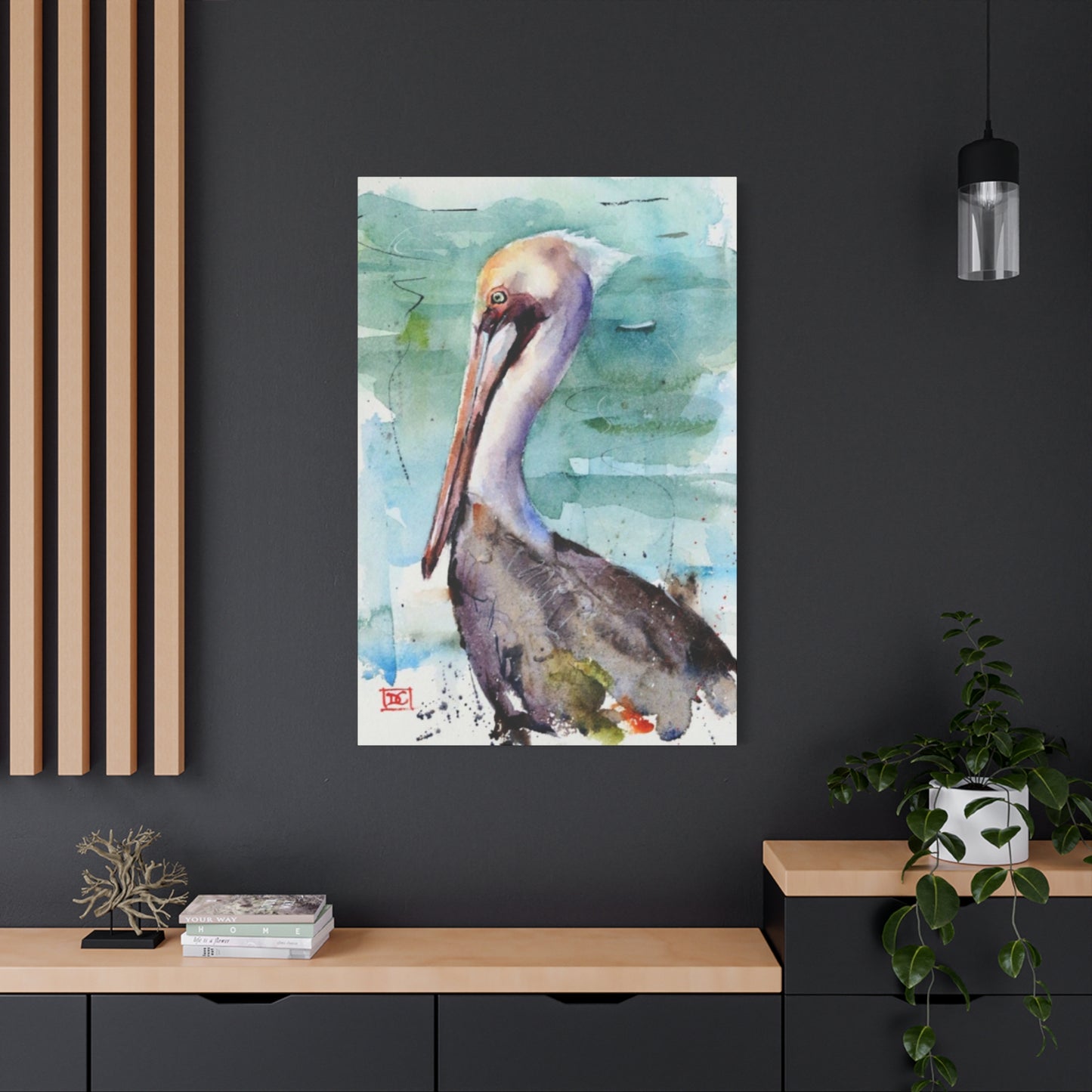The Ultimate Guide to Decorating with Pelican in Pond Wall Art
The incorporation of nature-themed artwork into residential and commercial spaces has become increasingly popular among interior designers and homeowners alike. Among the most captivating choices available in contemporary wall decoration are depictions of these magnificent water birds within their natural aquatic habitats. These artistic representations bring the tranquility of wetland environments directly into your living spaces, creating an atmosphere of peace and natural beauty that resonates with anyone who appreciates wildlife and serene landscapes.
The appeal of such artwork extends far beyond simple decoration. These pieces serve as windows into the natural world, offering daily reminders of the beauty that exists in our ecosystems. Whether you're redesigning a single room or undertaking a complete home makeover, integrating these nature-inspired pieces can transform the energy and aesthetic of your environment. The gentle presence of these aquatic birds creates a focal point that draws the eye while maintaining a sense of calm sophistication.
In recent years, the demand for wildlife-themed interior decoration has surged dramatically. People are increasingly seeking ways to connect with nature despite urban lifestyles that often keep them removed from natural environments. This artwork serves as a bridge between indoor comfort and outdoor splendor, allowing you to experience the serenity of wetland scenes without leaving your home. The combination of artistic skill and natural subject matter creates pieces that are both visually stunning and emotionally satisfying.
Nature-Inspired Canvas Prints Featuring Aquatic Birds
When considering artwork that celebrates the natural world, few subjects capture the essence of aquatic ecosystems quite like these elegant water birds. These nature-inspired canvas prints showcase the remarkable beauty of these creatures as they navigate through calm waters, hunt for fish, or simply rest upon the surface of tranquil ponds. The artistic interpretation of these scenes varies widely, from photorealistic representations that capture every feather and ripple to more impressionistic approaches that emphasize mood and atmosphere over precise detail.
The versatility of these nature-inspired pieces makes them suitable for virtually any interior design scheme. Whether your home features traditional furnishings, modern minimalism, or eclectic bohemian touches, there exists a style of this artwork that will complement your existing décor. The natural color palettes typically featured in these pieces, ranging from soft blues and greens to warm earth tones, integrate seamlessly with most color schemes while adding visual interest and depth to your walls.
These canvas prints often capture moments of pure natural beauty that might otherwise go unnoticed. The way sunlight dances across water surfaces, the subtle reflections of surrounding vegetation, and the graceful posture of these birds combine to create images that are both peaceful and dynamic. Artists who specialize in wildlife subjects spend countless hours observing their subjects in natural settings, ensuring that their work accurately represents both the physical characteristics of the birds and the atmospheric qualities of their habitats.
The production quality of contemporary canvas prints has reached remarkable levels of sophistication. Modern printing techniques can reproduce colors with stunning accuracy, capturing the subtle gradations of light and shadow that give these images their lifelike quality. The canvas material itself adds texture and dimension to the artwork, creating a more substantial presence than traditional paper prints while offering durability that ensures your investment will remain beautiful for years to come.
Beyond their aesthetic appeal, these nature-inspired works serve an educational purpose as well. They introduce viewers to the diversity of wildlife that inhabits wetland environments, potentially sparking interest in conservation efforts and environmental awareness. Children especially benefit from having wildlife imagery in their living spaces, as it nurtures curiosity about the natural world and encourages appreciation for biodiversity.
Serene Pond Scene Wall Decoration
The tranquility of pond environments has captivated artists and nature enthusiasts for centuries. These serene pond scene wall decorations capture the essence of these peaceful aquatic settings, offering viewers a visual escape into nature's calm embrace. The stillness of pond waters creates perfect conditions for reflection, both literal and metaphorical, as the mirrored surface doubles the beauty of surrounding landscapes and the creatures that inhabit these spaces.
These artistic compositions typically feature carefully balanced elements that work together to create harmonious scenes. The interaction between water, vegetation, sky, and wildlife produces images that feel complete and satisfying to the eye. The birds often serve as the central focus, but they exist within a broader ecosystem that includes aquatic plants, surrounding trees, and the ever-changing play of light across water surfaces. This holistic approach to composition ensures that viewers receive the full experience of pond environments rather than isolated wildlife portraits.
The psychological benefits of incorporating such peaceful imagery into your living spaces cannot be overstated. Research has consistently shown that exposure to nature scenes, even through artwork, can reduce stress levels, lower blood pressure, and improve overall mood. After a demanding day, returning home to walls adorned with these serene scenes provides an immediate sense of relief and relaxation. The visual cues of calm water and peaceful wildlife trigger responses in our brains that promote tranquility and well-being.
Different artistic styles approach pond scenes with varying techniques and intentions. Some artists favor highly detailed, realistic renderings that aim to transport viewers directly to the water's edge. Others embrace more stylized or abstract interpretations that capture the emotional essence of these environments rather than photographic accuracy. Both approaches have merit, and the choice between them largely depends on personal preference and the overall aesthetic you wish to achieve in your space.
The seasonal variations depicted in these artworks add another layer of interest and versatility. Spring pond scenes might showcase vibrant new growth and nesting behaviors, while summer images capture the lush fullness of wetland vegetation. Autumn brings rich golden tones and migration preparations, and winter scenes offer stark beauty with ice formations and hardy birds braving cold conditions. Collecting multiple pieces representing different seasons allows you to rotate your décor throughout the year, keeping your space fresh and aligned with natural cycles.
Canvas Art Designed for Living Room Spaces
Living rooms serve as the heart of most homes, functioning as gathering spaces for family and friends while also providing areas for relaxation and entertainment. Selecting appropriate artwork for these multipurpose areas requires careful consideration of scale, subject matter, and how the piece will interact with existing furnishings and architectural features. Canvas art featuring these aquatic birds offers an ideal solution for living room decoration, combining visual appeal with the versatility needed for such important spaces.
The size of artwork chosen for living room display significantly impacts its effectiveness as a design element. Larger pieces create bold statements that immediately capture attention upon entering the room, establishing the artwork as a primary focal point around which other design elements orbit. These substantial canvases work particularly well above sofas, mantels, or on expansive blank walls that might otherwise feel empty or neglected. The presence of a commanding artwork piece anchors the room visually, providing a sense of completeness and intentionality to the overall design.
Smaller canvas pieces, while more modest in scale, offer their own advantages in living room settings. They can be grouped together to create gallery wall arrangements that tell visual stories or showcase various aspects of wetland environments. This approach allows for greater flexibility and personalization, as you can curate collections that reflect your specific interests and aesthetic preferences. Mixed-size arrangements create dynamic visual interest while maintaining cohesion through shared subject matter and color palettes.
The color schemes present in these nature scenes typically complement common living room palettes beautifully. The blues and greens of water and vegetation pair naturally with neutral backgrounds, whether you favor warm beiges and browns or cooler grays and whites. The presence of these natural colors can actually help tie together disparate elements in your room, creating visual bridges between furniture, textiles, and architectural features that might otherwise feel disconnected.
Lighting considerations play a crucial role in maximizing the impact of your living room artwork. These canvas pieces benefit from proper illumination that brings out the depth and detail of the images without creating glare or washing out colors. Natural light from windows can beautifully illuminate these works during daytime hours, while strategically placed picture lights or track lighting ensure they remain visually compelling after sunset. The interplay between light and the canvas texture creates subtle visual interest that changes throughout the day, ensuring the artwork never becomes stale or predictable.
Gallery-Worthy Prints of Birds in Aquatic Settings
The distinction between ordinary wall decoration and truly gallery-worthy artwork often lies in the combination of artistic skill, subject matter significance, and production quality. Prints featuring these magnificent water birds have increasingly found their way into both private collections and public gallery spaces, recognized for their ability to capture moments of natural beauty with artistic sophistication that transcends simple documentation.
Gallery-quality pieces distinguish themselves through exceptional attention to detail and compositional excellence. These works demonstrate mastery of fundamental artistic principles including balance, contrast, focal point development, and color harmony. The artists behind these pieces possess deep understanding of both their subjects and their craft, resulting in images that resonate emotionally while also satisfying intellectually. Each element within the frame serves a purpose, contributing to the overall impact of the piece without unnecessary clutter or distraction.
The printing process used for gallery-worthy works employs the highest quality materials and techniques available. Premium canvas materials provide the ideal surface for reproducing fine art, offering texture that adds dimension while durability ensures longevity. Archival-quality inks resist fading even with extended exposure to ambient light, maintaining color vibrancy for decades when properly cared for. These technical considerations matter greatly when investing in artwork intended to enhance your space for years to come.
Framing options for these gallery-quality pieces deserve careful consideration as well. While many canvas prints feature gallery-wrapped edges that allow frameless display, adding carefully selected frames can elevate the presentation further. Quality frames provide both protection and enhancement, creating boundaries that separate the artwork from surrounding walls while adding visual weight and importance to the piece. The frame style you choose should complement both the artwork itself and your broader interior design scheme, whether that means sleek modern lines, ornate traditional moldings, or rustic natural wood finishes.
The investment value of gallery-worthy artwork extends beyond mere decoration. Quality pieces from respected artists or limited edition prints can appreciate over time, making them not only beautiful additions to your home but also sound financial decisions. Even reproductions of exceptional quality maintain their value well, as their beauty and the joy they bring to living spaces justify their cost many times over through years of daily appreciation.
Wildlife Wall Decoration Celebrating Aquatic Birds
Wildlife-themed interior decoration has evolved significantly from the hunting trophies and taxidermy displays of previous generations. Modern wildlife wall décor celebrates living creatures in their natural habitats, honoring the beauty and dignity of animals while promoting conservation awareness and environmental stewardship. Artwork featuring these graceful water birds exemplifies this contemporary approach, showcasing these remarkable creatures in ways that inspire admiration and respect rather than domination.
The educational value embedded in quality wildlife artwork cannot be overlooked. These pieces introduce viewers to species they might never encounter in person, fostering appreciation for biodiversity and the complex ecosystems that support varied life forms. Children growing up surrounded by wildlife imagery develop deeper connections to nature and often demonstrate increased interest in environmental protection as they mature. Even adults benefit from these visual reminders of the natural world, particularly those whose daily lives occur primarily in urban environments far removed from wild spaces.
Different species of these aquatic birds offer varied visual characteristics that suit different aesthetic preferences and design needs. Some species display dramatic coloring or distinctive physical features that create bold visual statements, while others embody more subtle elegance through graceful form and gentle colorations. Understanding the characteristics of different species allows you to select artwork that aligns perfectly with your design intentions while also reflecting your personal connection to particular aspects of the natural world.
The behavioral moments captured in quality wildlife artwork add narrative dimension to purely visual appeal. Images depicting hunting, nesting, preening, or social interactions tell stories that engage viewers beyond simple appreciation of form and color. These glimpses into animal lives remind us of the complexity and intelligence present throughout the animal kingdom, encouraging empathy and connection that transcends species boundaries. The best wildlife artists capture these moments with sensitivity and respect, avoiding anthropomorphization while still conveying the emotional resonance of the scene.
Conservation messaging can be subtly woven into wildlife décor without becoming preachy or heavy-handed. Simply by showcasing the beauty of these creatures and their habitats, artwork raises awareness of what we stand to lose if wetland environments continue to degrade. Many artists actively support conservation organizations, with portions of their sales funding habitat protection and species research. Choosing to display such artwork in your home aligns your aesthetic choices with environmental values, creating spaces that are both beautiful and meaningful.
Nature Wall Decoration Showcasing Water Birds
The human need for connection to nature remains constant despite increasing urbanization and indoor lifestyles. Nature wall décor addresses this need by bringing elements of the natural world into built environments where direct access to outdoor spaces may be limited. Artwork showcasing these water birds in their natural aquatic settings provides particularly effective nature connection, offering daily visual access to wetland environments that many people rarely experience directly.
Scientific research consistently demonstrates the physiological and psychological benefits of nature exposure. Even indirect contact through images produces measurable positive effects including reduced stress hormones, lower blood pressure, improved mood, and enhanced cognitive function. These benefits accumulate through regular exposure, meaning artwork that provides daily nature contact contributes meaningfully to overall wellbeing. The presence of water in these scenes adds additional calming effects, as humans show particular affinity for aquatic environments, a phenomenon scientists term "blue space" attraction.
The variety of wetland environments these birds inhabit provides diverse aesthetic options for nature décor. Freshwater ponds surrounded by lush vegetation offer different visual character than coastal marshes with their distinctive plants and wider horizons. Some prefer densely vegetated scenes full of rich greens and complex compositions, while others favor more minimalist water views with expansive sky and simple horizons. Understanding your personal preferences helps in selecting nature imagery that will provide maximum enjoyment and connection over years of display.
Seasonal changes in nature scenes offer opportunities to rotate artwork with the calendar, maintaining fresh perspectives and acknowledging natural cycles. Spring imagery bursting with new growth and breeding activity contrasts beautifully with summer's full abundance, autumn's golden tones and preparation for migration, and winter's spare beauty. Maintaining a collection that represents different seasons allows you to keep your décor dynamic and connected to the world beyond your walls, even if the view from your window shows only urban landscapes.
The authenticity of nature imagery matters to many people who choose this décor category. Artwork based on actual locations and genuine behavioral observations resonates differently than fantastical or heavily manipulated images that bear little relationship to reality. While artistic interpretation and creative license have their place, many find deeper satisfaction in knowing their wall art represents real places and realistic moments from the natural world. This authenticity creates bridges between indoor spaces and actual ecosystems, fostering genuine appreciation rather than romanticized fantasy.
Canvas Art Perfect for Hallways and Entryways
Hallways and entryways serve as transitional spaces that connect different areas of homes while also providing first impressions for visitors. These often-overlooked areas benefit tremendously from thoughtful artwork that acknowledges their unique characteristics and functions. Canvas pieces featuring water birds work exceptionally well in these spaces, bringing visual interest to areas that might otherwise feel like mere passageways rather than destinations worthy of attention and decoration.
The architectural challenges of hallways require specific approaches to artwork selection and display. These typically long, narrow spaces feature limited wall areas between doorways and often suffer from less-than-ideal lighting conditions. Artwork must work within these constraints while still making meaningful contributions to the home's overall aesthetic. Smaller to medium-sized pieces typically suit hallway dimensions better than large-scale works, fitting comfortably between doors and architectural features while maintaining appropriate scale relationships.
Creating gallery walls in hallways transforms these transitional spaces into exhibition areas that reward the time spent moving through them. Multiple pieces featuring water birds in various compositions or settings provide visual variety that makes hallway transit more engaging. The length of hallways accommodates sequential viewing experiences where each piece can be appreciated individually as you pass, yet the collection works together to create unified thematic statements. This approach maximizes the decorative potential of spaces that might otherwise remain bare and uninviting.
Entryways establish tone for entire homes, making first impressions on visitors while also greeting family members each time they arrive home. Artwork in these spaces should reflect your aesthetic sensibilities while remaining broadly appealing and welcoming. The peaceful nature of water bird imagery creates positive first impressions, suggesting homes that value beauty, nature, and tranquility. These pieces start conversations with visitors while providing pleasing sights that make coming home feel special rather than routine.
Lighting considerations prove particularly important in hallways and entryways where natural light may be limited. Installing picture lights or ensuring adequate overhead illumination allows artwork to be properly appreciated even in inherently dim spaces. The interplay between light and canvas texture creates subtle visual interest that changes as you move through the space, preventing the flat appearance that can result from inadequate illumination. Proper lighting transforms artwork from barely visible decoration into meaningful design elements that enhance these transitional areas.
Wildlife Wall Posters Designed for Children's Rooms
Children's spaces require special consideration when selecting décor that will support healthy development while also creating environments kids genuinely enjoy. Wildlife wall posters featuring water birds offer excellent choices for children's rooms, combining educational value with visual appeal that captures young imaginations. These nature images introduce children to wildlife diversity while creating atmospheres conducive to both play and rest.
The educational benefits of wildlife imagery in children's spaces extend across multiple developmental domains. Exposure to diverse animal species builds knowledge of the natural world and the variety of life forms that share our planet. This early familiarity fosters curiosity about nature and science that can develop into lifelong interests or even career paths. Quality wildlife art that accurately depicts animal anatomy, behavior, and habitats provides informal learning opportunities that complement formal education while feeling entertaining rather than instructional.
Age-appropriate artwork selection ensures décor grows with children through different developmental stages. Younger children enjoy brightly colored, simplified images that clearly depict recognizable animals in straightforward compositions. As children mature, they can appreciate more sophisticated artwork with greater detail, subtlety, and complexity. Choosing timeless pieces rather than trendy character-based décor allows rooms to remain age-appropriate longer, avoiding the need for frequent redecoration as children outgrow juvenile themes.
The calming effects of nature imagery prove particularly valuable in children's sleeping areas where creating peaceful atmospheres supports healthy sleep patterns. These water bird scenes provide visual interest without the stimulating intensity that can interfere with bedtime routines and sleep quality. The gentle presence of wildlife in natural settings creates reassuring rather than frightening night-time environments, helping children feel secure and comfortable in their spaces.
Interactive opportunities enhance the value of wildlife posters in children's rooms. Parents can use artwork as starting points for discussions about animals, ecosystems, conservation, and the natural world. Questions about what the birds eat, where they live, how they care for their young, and why their habitats matter transform wall décor into educational tools that facilitate parent-child bonding while building knowledge. These conversations make room décor meaningful beyond simple visual appeal.
Artwork for Coastal Interior Design Schemes
Coastal interior design draws inspiration from seaside environments, incorporating colors, textures, and imagery associated with beaches, oceans, and marine life. While these water birds inhabit various aquatic environments including inland freshwater bodies, many species also frequent coastal areas, making their imagery appropriate and valuable for coastal décor schemes. These pieces bring authentic coastal wildlife into design contexts where they enhance existing themes while avoiding the cliché elements that can make coastal design feel derivative.
The color palettes common in coastal design align beautifully with water bird imagery. Blues ranging from deep navy to pale sky tones, seafoam greens, sandy beiges, and crisp whites dominate coastal schemes, and these exact colors appear naturally in artwork depicting these birds in their aquatic habitats. The organic presence of these hues in nature-based artwork feels more authentic than purely decorative uses of coastal colors, grounding design choices in real-world references rather than abstract color theory.
Texture plays crucial roles in successful coastal design, with emphasis on natural materials and tactile variety. Canvas artwork contributes valuable texture to walls that might otherwise feature only smooth painted surfaces. The woven texture of canvas material echoes natural textiles like linen and cotton while the visual texture within the artwork itself, depicting water surfaces, feathers, and vegetation, adds layers of interest that enrich sensory experiences of coastal spaces.
The relaxed, casual atmosphere typical of coastal design welcomes nature-inspired artwork that reinforces connections to outdoor environments. These water bird pieces support the indoor-outdoor flow that characterizes successful coastal homes, where boundaries between interior spaces and surrounding natural settings feel permeable rather than rigid. The imagery reminds occupants and visitors of the wildlife that shares coastal environments, fostering appreciation for the ecosystems that make coastal living special.
Avoiding coastal cliché requires thoughtful selection of artwork that feels genuine rather than generic. While shells, anchors, and nautical stripes have their place in coastal design, overreliance on these obvious symbols can make spaces feel themed rather than authentically coastal. Wildlife imagery provides sophisticated alternatives that communicate coastal identity through genuine natural elements rather than decorative shorthand. These birds actually inhabit coastal areas, making their inclusion logical and authentic rather than arbitrarily decorative.
Brightening Walls with Canvas Artwork
The physical and psychological effects of artwork on interior spaces extend beyond simple decoration to influence actual and perceived brightness within rooms. Strategic use of canvas pieces featuring these water birds can significantly brighten walls and entire rooms, creating more cheerful, inviting environments that feel open and energized rather than dark and oppressive. Understanding how artwork influences brightness helps in making selections that maximize these beneficial effects.
Color values within artwork dramatically affect perceived brightness. Pieces featuring lighter tones, abundant whites and pastels, or bright accent colors reflect more light than dark, heavily saturated images. Water bird artwork depicting morning scenes with soft pastel skies, sunlit water surfaces, or misty atmospheric conditions creates brightness through predominance of light values. The reflective qualities of water surfaces particularly contribute to perceived brightness as depicted light plays across rippling surfaces.
Actual light reflection from canvas surfaces contributes to room illumination as well. The semi-matte finish typical of canvas prints reflects ambient light back into rooms without creating
Retry
S
Continue
the distracting glare associated with glossy surfaces. This gentle light reflection adds to overall room brightness while maintaining comfortable viewing conditions. The texture of canvas material creates subtle variations in how light reflects across the surface, producing soft luminosity that feels natural and pleasant rather than harsh or artificial.
Strategic placement of bright artwork maximizes its impact on room illumination. Positioning lighter pieces on walls opposite windows allows them to catch and reflect natural light throughout daylight hours, effectively multiplying the illuminating effect of available sunlight. In darker rooms or spaces with limited natural light, bright artwork combined with dedicated picture lighting creates pools of illumination that combat overall dimness and establish visual anchors that draw eyes and attention.
The psychological perception of brightness operates somewhat independently from actual light levels, influenced heavily by visual cues and color relationships. Rooms containing bright, light-filled artwork feel more illuminated even when measured light levels remain constant. This perceptual phenomenon means artwork selection can address feelings of dimness or closed-in atmosphere without requiring actual changes to lighting systems or window treatments. The mind interprets visual brightness cues and adjusts overall perception of environmental conditions accordingly.
Seasonal considerations influence how artwork affects perceived brightness throughout the year. During winter months when natural daylight hours shorten and skies often appear gray and overcast, bright artwork becomes particularly valuable for maintaining cheerful interior atmospheres. The constant presence of visually bright water bird scenes provides reliable sources of visual light and color that counteract seasonal darkness and its potentially depressing effects on mood and energy levels.
Contemporary Interior Design with Pond Artwork
Contemporary interior design emphasizes clean lines, neutral color foundations, and selective use of bold elements that create visual interest without clutter. This design approach values quality over quantity, favoring fewer carefully chosen pieces that make strong statements rather than collections of decorative objects. Artwork featuring these water birds in pond settings integrates beautifully into contemporary schemes when selected with attention to style, scale, and how pieces interact with surrounding design elements.
The organic forms present in nature imagery provide valuable contrast to the geometric precision typical of contemporary furniture and architecture. While contemporary design often features straight lines, right angles, and clearly defined forms, natural subjects introduce curves, irregular shapes, and flowing lines that soften overall aesthetics. Water bird imagery particularly offers this counterbalance through the graceful curves of avian bodies, irregular shorelines, and organic vegetation forms. This interplay between geometric and organic creates visual tension that keeps contemporary spaces interesting rather than sterile.
Color strategies in contemporary design often begin with neutral foundations of whites, grays, and blacks, then introduce color through carefully chosen accent elements. Water bird artwork serves this accent function beautifully, bringing natural color palettes into spaces without overwhelming neutral backgrounds. The blues of water and sky, greens of aquatic vegetation, and earth tones of natural settings provide sophisticated color interest that feels intentional and curated rather than random or chaotic.
Material authenticity matters in contemporary design, which tends to favor honest expression of materials rather than imitation or disguise. Canvas as an artistic medium aligns with these values through its genuine textile nature and straightforward presentation. The visible texture of canvas weave, the dimensionality created by stretching over frames, and the absence of glass barriers between viewer and image all communicate material honesty that contemporary design principles appreciate and reward.
The focus on craftsmanship and quality in contemporary interiors demands artwork that demonstrates equivalent attention to excellence. These water bird pieces must exhibit superior composition, technical skill, and production values to earn their place in contemporary schemes that reject mediocrity and settle for nothing less than exceptional. The best examples of this artwork category display the artistic sophistication and manufacturing quality that contemporary design requires, justifying their prominent placement in carefully curated spaces.
Artwork for Meditation and Contemplative Spaces
Dedicated meditation spaces or areas designated for contemplation and spiritual practice require carefully considered décor that supports these specialized functions. The artwork chosen for such spaces significantly influences their effectiveness as environments for introspection, mindfulness, and inner peace. Canvas pieces depicting these water birds in serene pond settings prove particularly suitable for meditation areas, providing focal points that facilitate mental centering while embodying the tranquility practitioners seek.
Visual focal points serve important functions during meditation practice, offering points of concentration that help busy minds settle into meditative states. Gazing meditation techniques specifically utilize visual objects as anchors for attention, preventing mental wandering while avoiding the strain that can accompany closed-eye practices for extended periods. Water bird imagery provides ideal focal subjects, interesting enough to hold attention but not so stimulating as to provoke excessive mental activity or emotional reactivity.
The natural elements present in these scenes align beautifully with many meditation philosophies that emphasize connection to nature and recognition of our place within larger ecosystems. Contemplating these images reminds practitioners of the natural world beyond their immediate surroundings, fostering perspective and reducing the significance of daily concerns that often dominate mental space. The peaceful coexistence of water, vegetation, and wildlife depicted in quality artwork models the harmony and balance meditation practices seek to cultivate internally.
Color choices for meditation space artwork require particular sensitivity to how different hues affect consciousness and mental states. Cool colors including blues and greens promote calm mental states conducive to meditation, while warm colors can energize or stimulate in ways that may not serve contemplative purposes. The naturally cool palette of water and vegetation scenes makes them inherently appropriate for meditation environments. Any warm accents present in sunrise or sunset lighting typically appear in gentle, diffused forms that add beauty without creating stimulation.
The symbolic dimensions of water bird imagery offer additional value in contemplative contexts. Water represents emotional depth, purification, and flow in many spiritual traditions. Birds symbolize freedom, perspective, and transcendence. The combination of these elements creates rich symbolic territory for meditation and contemplation, allowing practitioners to explore multiple layers of meaning during their practice. The artwork becomes more than mere decoration, transforming into a teaching tool that supports spiritual development and self-understanding.
Abstract Interpretations of Pond Scenes
While realistic depictions of these water birds in their natural habitats appeal to many people, abstract interpretations offer alternative aesthetic approaches that suit different tastes and design contexts. These more interpretive pieces move beyond literal representation to capture essential qualities, emotional resonances, or conceptual aspects of pond environments and their avian inhabitants. Abstract approaches range from slightly stylized treatments that maintain recognizable subjects to highly abstracted works where forms dissolve into color, line, and texture.
The artistic freedom inherent in abstraction allows artists to emphasize particular aspects of their subjects that might go unnoticed in realistic treatments. An abstract work might foreground the reflective qualities of water through emphasis on color relationships and fluid forms, or capture the essence of avian grace through flowing lines and elegant shapes freed from anatomical precision. These interpretive choices create artwork that engages viewers differently than realistic images, inviting personal interpretation and emotional response rather than straightforward recognition.
Color relationships gain particular importance in abstract work where they operate freed from requirements of realistic depiction. Artists can push color intensity beyond natural ranges, create harmonies or contrasts that serve aesthetic rather than representational goals, and use color symbolically to convey mood or meaning. Abstract pond scenes might feature saturated blues and greens that intensify natural palettes, unexpected color combinations that create visual excitement, or reduced palettes that explore subtle variations within limited ranges.
The versatility of abstract artwork in interior design stems from its open interpretation and aesthetic flexibility. Because abstract pieces don't depict specific, recognizable subjects, they integrate into varied design schemes more easily than realistic imagery. A highly abstract piece suggesting water and avian forms can complement contemporary, traditional, or eclectic interiors depending on its specific characteristics and how it's presented. This flexibility makes abstract interpretations practical choices for people who want nature-inspired artwork but need maximum design versatility.
Emotional engagement with abstract artwork operates through direct aesthetic experience rather than mediated through recognition and association. Viewers respond to colors, forms, compositions, and textures themselves rather than to depicted subjects. This direct engagement can produce powerful responses that bypass cognitive processing, creating immediate emotional impacts that realistic work may not achieve. For people seeking artwork that affects them viscerally and emotionally rather than intellectually, abstract interpretations offer compelling alternatives to realistic depictions.
Tropical Wildlife Canvas Featuring Aquatic Birds
Tropical environments support incredible biodiversity including spectacular water bird species found nowhere else on Earth. Canvas artwork featuring these tropical varieties brings the exotic beauty of equatorial and subtropical regions into homes located anywhere on the planet. The vibrant colors, lush vegetation, and dramatic lighting characteristic of tropical settings create visually striking pieces that make bold design statements while celebrating some of the world's most remarkable wildlife.
The color intensity of tropical scenes exceeds that of temperate environments, with supersaturated greens of dense vegetation, brilliant blues of tropical waters and skies, and often spectacular plumage colors on tropical bird species. This natural color abundance creates artwork that energizes spaces and draws immediate attention. The bold visual character of tropical imagery suits contemporary and eclectic design schemes that welcome strong color statements, though careful selection ensures pieces enhance rather than overwhelm their settings.
Tropical water birds include species with distinctive physical characteristics that create memorable visual subjects. Some sport elaborate plumage extensions or ornamental feathers used in courtship displays. Others exhibit striking color patterns or unusual body structures adapted to specialized ecological niches. This diversity provides extensive options for collectors interested in tropical themes, from subtle pieces featuring modest species to dramatic works showcasing the most spectacular tropical varieties.
The lush vegetation typical of tropical wetland environments adds layers of visual complexity to tropical bird artwork. Dense growth, dramatic foliage shapes, and the interplay of light through canopy layers create rich backgrounds against which avian subjects appear. Some viewers prefer these complex compositions full of visual information and detail, while others favor simpler treatments that isolate bird subjects against less busy backgrounds. Both approaches can produce compelling tropical wildlife artwork depending on artistic intent and execution.
Conservation concerns lend additional significance to tropical wildlife artwork as many species face serious threats from habitat loss, climate change, and other human impacts. Displaying such work raises awareness of these magnificent creatures and their imperiled homes while supporting artists who often contribute to conservation efforts through their work. The beauty captured in tropical bird canvas pieces reminds viewers of what we risk losing if conservation efforts fail, potentially motivating engagement with environmental protection.
Gallery Wall Ideas Incorporating Pond Prints
Gallery walls transform blank wall expanses into curated exhibitions that showcase collections of artwork, photographs, or mixed media. Creating successful gallery walls requires careful attention to piece selection, arrangement, and the relationships between individual elements. Incorporating prints featuring water birds in pond settings into gallery wall designs offers opportunities to build nature-themed collections that tell visual stories while creating compelling design features.
The foundation of successful gallery walls lies in establishing cohesive themes that unify disparate pieces into coherent collections. When building gallery walls around pond bird imagery, you might choose to include only these specific subjects or expand to broader nature themes that incorporate complementary subjects. Other wetland wildlife, aquatic plants, landscape views, or even abstract pieces suggesting water and natural forms can work alongside your bird prints to create rich, varied collections that maintain thematic unity.
Size variation within gallery walls prevents monotony while creating visual rhythm and hierarchy. Mixing large anchor pieces with medium and small prints produces dynamic compositions where the eye moves naturally between elements rather than scanning uniformly across identical formats. The largest pieces typically serve as focal points within gallery arrangements, with smaller works supporting and surrounding these primary elements. Asymmetrical arrangements often feel more dynamic than rigid grids, though both approaches can succeed depending on aesthetic goals and available space.
Spacing between pieces significantly impacts gallery wall appearance and effectiveness. Consistent spacing creates organized, intentional looks where individual pieces maintain distinct identities while clearly belonging to unified collections. Common spacing measurements range from two to four inches between frames, though larger gaps can work in some contexts. The spacing you choose should remain consistent throughout the arrangement to maintain visual coherence and prevent haphazard appearance that undermines the carefully curated impression gallery walls should convey.
Frame selection for gallery walls offers creative opportunities and challenges. Some collectors prefer consistent frames throughout their collections, creating unity through repetition of frame style, color, or material. Others embrace frame variation as additional layer of visual interest, mixing styles while maintaining some connecting element such as similar color tones or comparable visual weight. For canvas prints without frames, maintaining consistent edge treatment across pieces helps unify the collection despite absence of framing elements.
Adding Serenity Through Water Bird Wall Art
The pursuit of serene interior environments drives many decoration decisions as people seek refuge from hectic modern life within their homes. Adding serenity to living spaces requires thoughtful selection of colors, furnishings, lighting, and décor that work together to create peaceful atmospheres. Wall art featuring these water birds in their natural pond habitats contributes significantly to serene environments through its inherent tranquility, natural subject matter, and carefully composed imagery.
The mechanisms through which artwork influences environmental serenity operate on multiple levels simultaneously. Visual processing of peaceful imagery triggers neurological responses that promote relaxation, reducing activity in brain regions associated with stress and anxiety while increasing activity in areas linked to positive emotion and rest. These physiological responses occur automatically and unconsciously, meaning serene artwork provides continuous beneficial effects even without deliberate attention or awareness.
The absence of visual chaos or conflict in serene artwork prevents the stimulation that can create ambient stress within environments. Compositions featuring balanced elements, harmonious colors, and coherent subjects allow eyes to rest comfortably without searching for meaning or struggling to process confusing information. Water bird imagery typically exhibits these calming compositional qualities through its depiction of peaceful natural moments where everything exists in appropriate relationship without tension or discord.
Color harmony in serene artwork avoids jarring contrasts or aggressive combinations that create visual tension. The natural color progressions present in pond scenes, where sky blues transition smoothly into water reflections, and green vegetation grades from dark depths to sun-illuminated surfaces, demonstrate the gentle color relationships that promote serenity. Even when more dramatic colors appear in sunset or sunrise scenes, they typically blend and fade rather than clash, maintaining overall harmony despite increased intensity.
The cumulative effect of serene artwork compounds over time through repeated exposure that gradually reshapes environmental character and emotional associations. Spaces initially felt as ordinary or even slightly stressful transform through the presence of consistently peaceful imagery that sets new emotional tones. Over weeks and months, these water bird pieces become integral to how spaces feel, and their absence would be noticed immediately as removal of calming influences that had become expected and relied upon for emotional regulation.
Versatile Canvas Prints for Every Room
The versatility of water bird canvas prints makes them suitable for virtually any room in residential or commercial spaces. This adaptability stems from their universal appeal, appropriate subject matter, variable styles, and ability to complement diverse design schemes. Understanding how these pieces function in different room contexts helps in making selections that maximize their impact and ensure satisfaction with placement decisions.
Living areas benefit from these prints through their conversation-starting appeal and ability to establish room character. The artwork sets tones for spaces where people gather, influencing how comfortable and welcome visitors feel while reflecting homeowner taste and interests. Pieces selected for living areas should typically represent your finest acquisitions, as these rooms receive maximum viewing attention from both household members and guests.
Dining spaces gain unexpected elegance through nature artwork that enhances the civilized pleasure of shared meals. The presence of these water birds creates sophisticated ambiance without the formality that can make dining rooms feel uncomfortable or overly stiff. The natural subject matter complements the organic aspects of dining, from fresh foods to the fundamental human practice of gathering around shared tables.
Kitchens surprisingly welcome nature imagery despite their utilitarian functions and practical demands. Modern open-concept designs that combine kitchens with living areas particularly benefit from artwork that helps integrate these spaces visually while softening the hard surfaces and mechanical elements inevitable in cooking spaces. The presence of nature subjects in kitchens reminds us of food's ultimate origins in natural systems, adding philosophical dimension to daily meal preparation.
Bathroom spaces often get overlooked in decoration planning yet they offer opportunities for creating spa-like retreats through thoughtful design. Water bird artwork proves particularly appropriate for bathrooms where water themes create thematic coherence while the calming imagery enhances the restorative functions of bathing spaces. The humidity concerns that might affect some artwork types pose minimal problems for properly sealed canvas prints designed for interior use.
Home offices, craft rooms, and hobby spaces all benefit from the focus-enhancing qualities of nature imagery that provides mental rest breaks without distracting from work or creative pursuits. The presence of these peaceful subjects prevents the clinical atmosphere that can develop in purely functional spaces while maintaining the professionalism appropriate for work environments. Studios and workshops gain particular benefit from imagery that connects creative practice to natural inspiration and organic forms.
Conclusion
The enduring appeal of artwork featuring these magnificent water birds within their serene pond habitats reflects fundamental human needs for nature connection, aesthetic beauty, and peaceful environments. Throughout this comprehensive exploration, we have examined the multifaceted roles these pieces play in contemporary interior design, from their psychological benefits and stress-reduction capabilities to their versatility across diverse spaces and design styles. The transformation of ordinary walls into captivating visual destinations through thoughtfully selected canvas prints demonstrates how accessible quality artwork has become in the modern era.
These nature-inspired pieces transcend mere decoration by serving as daily reminders of the beauty existing beyond our built environments. In an increasingly urbanized world where direct nature contact grows rare for many people, the presence of these images creates vital bridges between indoor comfort and outdoor wonder. They invite us to pause amid life's demands, to appreciate the grace of these remarkable creatures, and to remember our place within larger ecosystems that deserve our respect and protection. The calming influence these artworks provide contributes measurably to wellbeing, creating homes that nurture rather than merely house their inhabitants.
The remarkable diversity available within this artwork category ensures suitable options for virtually any space, aesthetic preference, or budget. From bold large-scale statement pieces that anchor entire room designs to intimate smaller works perfect for personal spaces, from photorealistic depictions to abstract interpretations, the range accommodates every taste and need. This versatility, combined with the universal appeal of wildlife and water themes, explains why these pieces maintain consistent popularity even as design trends shift and evolve. Their timeless subject matter and natural beauty ensure they never feel dated or out of place.
The practical advantages of canvas prints, including their durability, easy maintenance, and ability to integrate seamlessly into various interior contexts, make them sensible choices for real-world living spaces. Unlike more delicate artwork forms requiring special care or display conditions, quality canvas pieces withstand normal household conditions while maintaining their appearance for decades. This resilience makes them particularly appropriate for busy households, homes with children or pets, and anyone seeking beautiful artwork without demanding maintenance requirements or fragility concerns.
Beyond individual aesthetic and practical considerations, choosing to display these water bird images connects us to broader conversations about conservation, environmental stewardship, and our responsibility to protect natural habitats and biodiversity. These pieces raise awareness of wetland ecosystems and the creatures depending on them, potentially inspiring viewers to support conservation efforts or make lifestyle choices benefiting environmental health. When artwork serves not only beauty but also education and advocacy, it achieves deeper significance that enriches both individual lives and collective efforts toward sustainability.

















